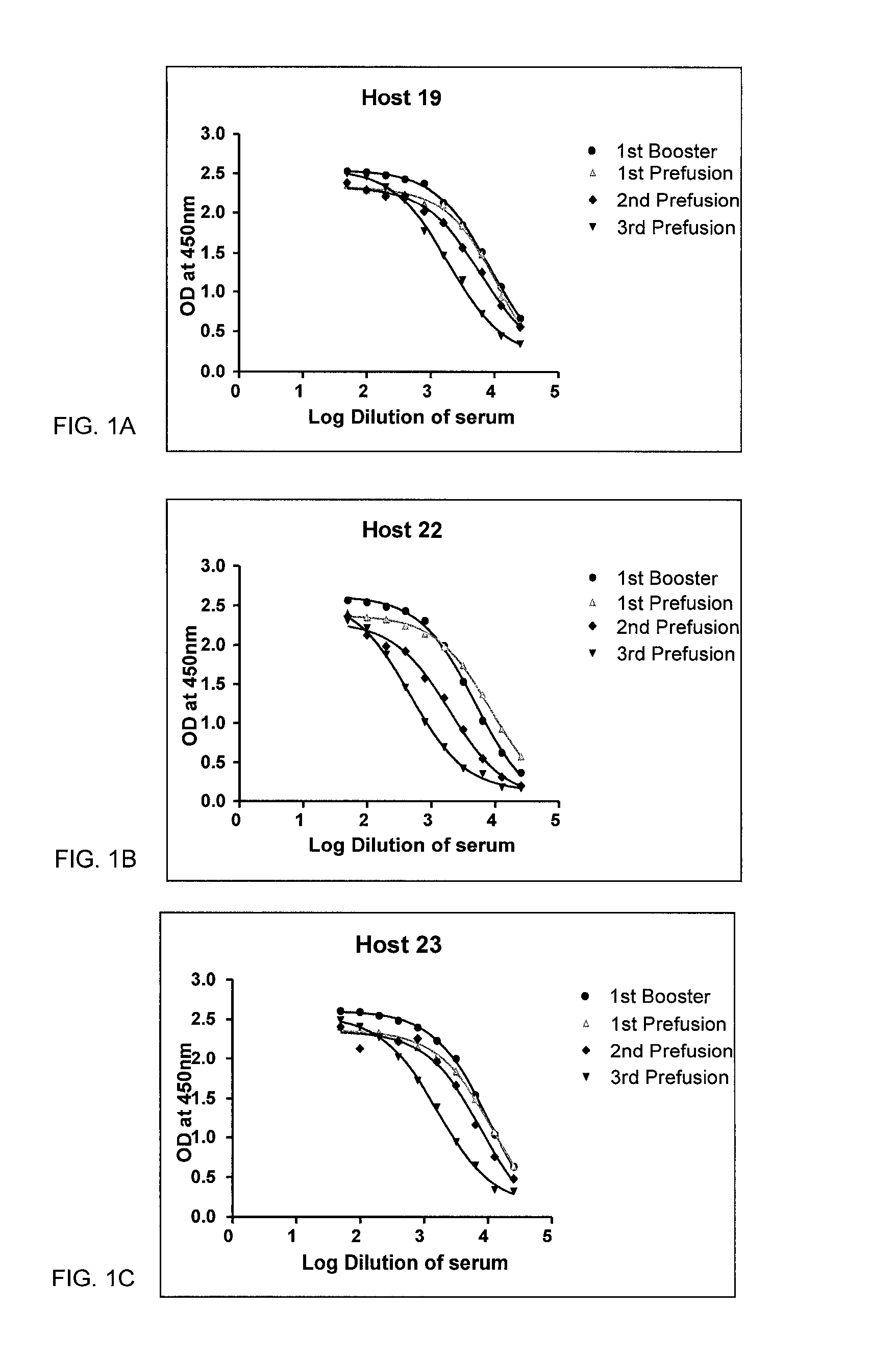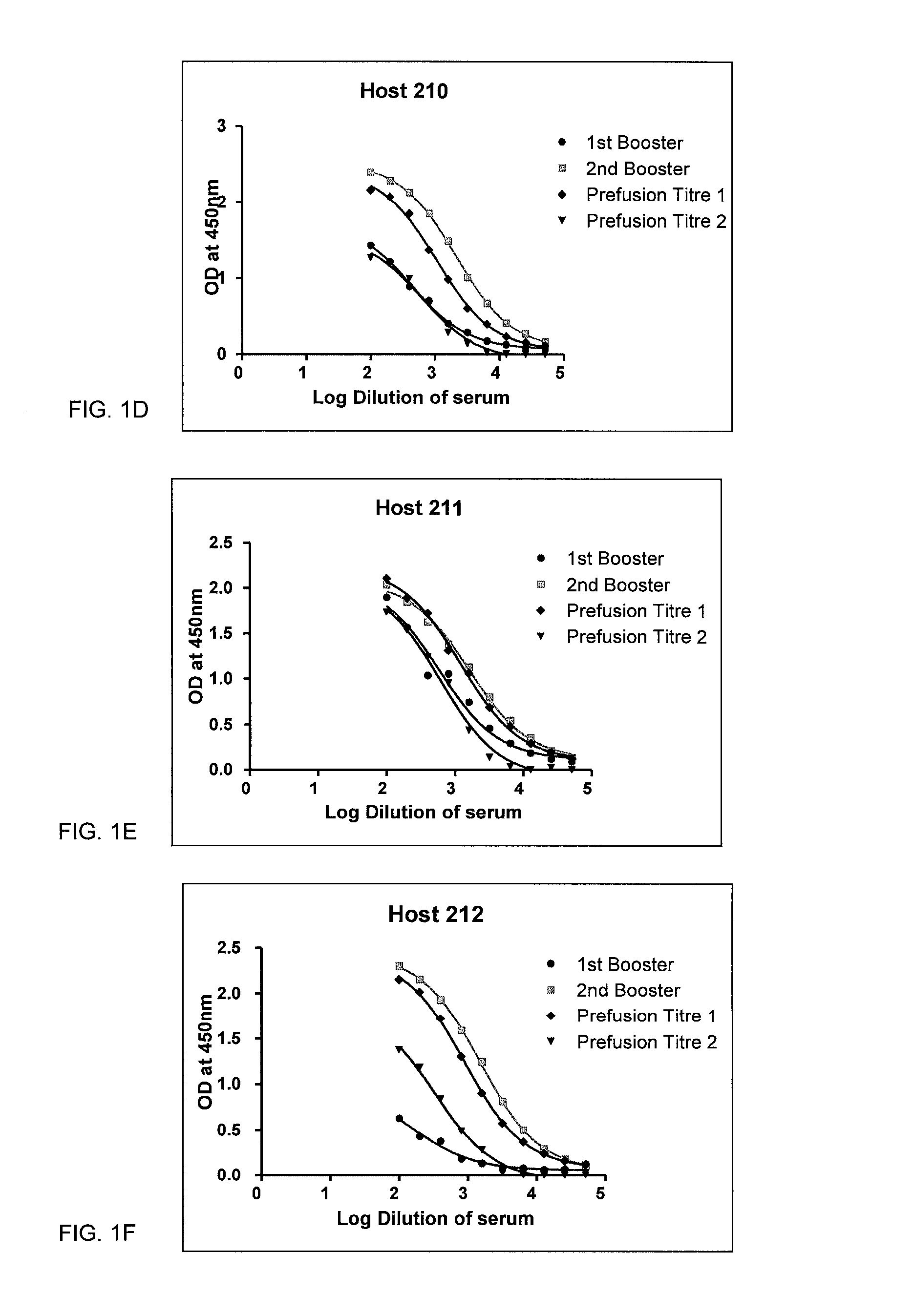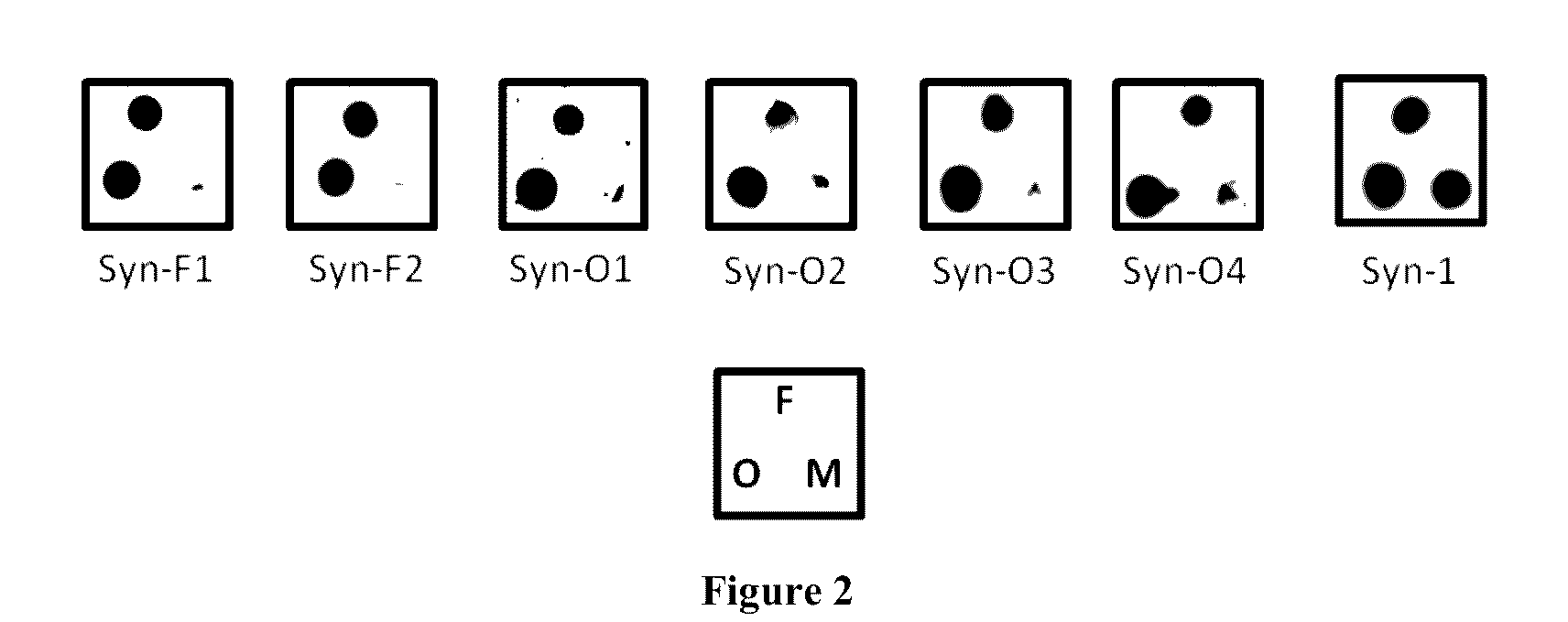Alpha-synuclein antibodies and uses thereof
- Summary
- Abstract
- Description
- Claims
- Application Information
AI Technical Summary
Benefits of technology
Problems solved by technology
Method used
Image
Examples
example 1
Preparation α-synuclein Aggregates Antibodies
Preparation of α-synuclein Fibrils
[0156]Purified recombinant α-synuclein was used. Freshly prepared α-synuclein (50 μM) solution was incubated at 37° C. in a thermomixer (800 rpm) for 7 days for aggregation. The aggregation process of α-synuclein was monitored by Thioflavin-S (Th-S) binding assay. Once the aggregation was complete, the fibrils were aliquoted into small samples and stored at −80° C. until used.
Preparation of α-Synuclein Oligomers
[0157]Freshly prepared α-synuclein solution was mixed with dopamine at 1:7 molar ratio (α-synuclein:dopamine) and incubated at 37° C. in a thermomixer (800 rpm) overnight. Next day the solution containing oligomers was aliquoted into small samples and stored at −80° C. until used.
Immunization
[0158]Balb / c female mice were used for sub-cutaneous immunization with α-synuclein. Each mouse received an initial immunization of 50 μg of the α-synuclein solution mixed with Freunds Complete Adjuvant (1:1 v / v...
example 2
Screening the Specificity of Hybridoma to α-synuclein Aggregates by Dot Blot
[0172]50 ng (5 μl in PBS) of α-synuclein fibrils (F), oligomers (O) or monomers (M) were spotted onto a nitrocellulose membrane and dried at room temperature for 30 minutes. The membranes were blocked with 5% skimmed milk in PBST (PBS containing 0.05% Tween 20) for 1 h at room temperature. The membranes were then washed 3 times with PBST before probing with culture supernatant 1:1 diluted in PBST and incubated for 2 h at room temperature. The Syn-1 antibody was used as control. After the membranes were washed with PBST, 1:20000 diluted goat anti-mouse IgG-HRP was added and incubated for 1 h at room temperature. The membranes were then washed with PBST followed by 2 times with PBS. The membranes were developed with Super signal West pico Chemiluminescent substrate (Pierce).
[0173]The rest of the dot blots are shown in FIG. 2. Out of 278 clones tested by dot blot, 45 clones were found to be stable and out of th...
example 3
Mass Culture and Purification of Monoclonal Antibody
[0174]Six clones identified to be specific for α-synuclein aggregates were taken for mass culture. These clones were Syn-F1, Syn-F2, Syn-O1, Syn-O2, Syn-O3 and Syn-O4. The growth media was CDM4 mAb (Hyclone) supplemented with 2 mM glutamax (Gibco), Penstrep (Sigma), 50 μg / ml Gentamycin (Sigma) and 50 μM beta-ME (Sigma). Once the cells were confluent and the media colour changed to yellow, the culture supernatnants were collected and stored at −20° C. until used. Monoclonal antibodies were purified from the culture supernatants using Protein G-Agarose affinity chromatography. Protein G-Agarose column was prepared and equilibrated with 20 bed volumes of 20 mM Phosphate buffer pH 7.2. The culture supernatant (200 ml) was centrifuged at 1500 rpm for 10 min at 4° C. The supernatants were collected and passed through the column, 5-6 times, keeping the flow rate to ˜1 ml / minute. The column was then washed with 15 bed volumes of 20 mM Phos...
PUM
| Property | Measurement | Unit |
|---|---|---|
| dissociation constant | aaaaa | aaaaa |
| dissociation constant | aaaaa | aaaaa |
| pH | aaaaa | aaaaa |
Abstract
Description
Claims
Application Information
 Login to View More
Login to View More - R&D
- Intellectual Property
- Life Sciences
- Materials
- Tech Scout
- Unparalleled Data Quality
- Higher Quality Content
- 60% Fewer Hallucinations
Browse by: Latest US Patents, China's latest patents, Technical Efficacy Thesaurus, Application Domain, Technology Topic, Popular Technical Reports.
© 2025 PatSnap. All rights reserved.Legal|Privacy policy|Modern Slavery Act Transparency Statement|Sitemap|About US| Contact US: help@patsnap.com



